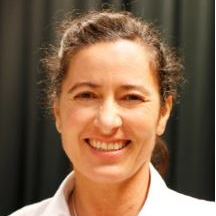Boat-Based Sports Biomechanics
A special issue of Sports (ISSN 2075-4663).
Deadline for manuscript submissions: closed (31 January 2016) | Viewed by 13275
Special Issue Editor
Interests: sports injury biomechanics; sports biomechanics; sport injury prevention; sport injury epidemiology; sport anthropometry; equipment testing; meta-analyses; sports technology
Special Issue Information
Dear Colleagues,
Boat-based sports at the Olympics include rowing, kayaking, canoe, and sailing. The performance in these sports is influenced by biomechanics, technique-training methods, boat design and set-up, and fluid mechanics. Devices used to measure contributing factors can help with monitoring athlete-boat setup and performance improvement. The aim of this Special Issue is to provide an update on boat-based sports biomechanics research.
Prof. Dr. Patria Hume
Guest Editor
Manuscript Submission Information
Manuscripts should be submitted online at www.mdpi.com by registering and logging in to this website. Once you are registered, click here to go to the submission form. Manuscripts can be submitted until the deadline. All submissions that pass pre-check are peer-reviewed. Accepted papers will be published continuously in the journal (as soon as accepted) and will be listed together on the special issue website. Research articles, review articles as well as short communications are invited. For planned papers, a title and short abstract (about 100 words) can be sent to the Editorial Office for announcement on this website.
Submitted manuscripts should not have been published previously, nor be under consideration for publication elsewhere (except conference proceedings papers). All manuscripts are thoroughly refereed through a single-blind peer-review process. A guide for authors and other relevant information for submission of manuscripts is available on the Instructions for Authors page. Sports is an international peer-reviewed open access monthly journal published by MDPI.
Please visit the Instructions for Authors page before submitting a manuscript. The Article Processing Charge (APC) for publication in this open access journal is 1800 CHF (Swiss Francs). Submitted papers should be well formatted and use good English. Authors may use MDPI's English editing service prior to publication or during author revisions.
Keywords
- boat-based sports biomechanics
- rowing
- kayaking
- canoe
- sailing
- biomechanics
- technique training methods
- measurement devices
- boat design and set-up
- fluid mechanics






